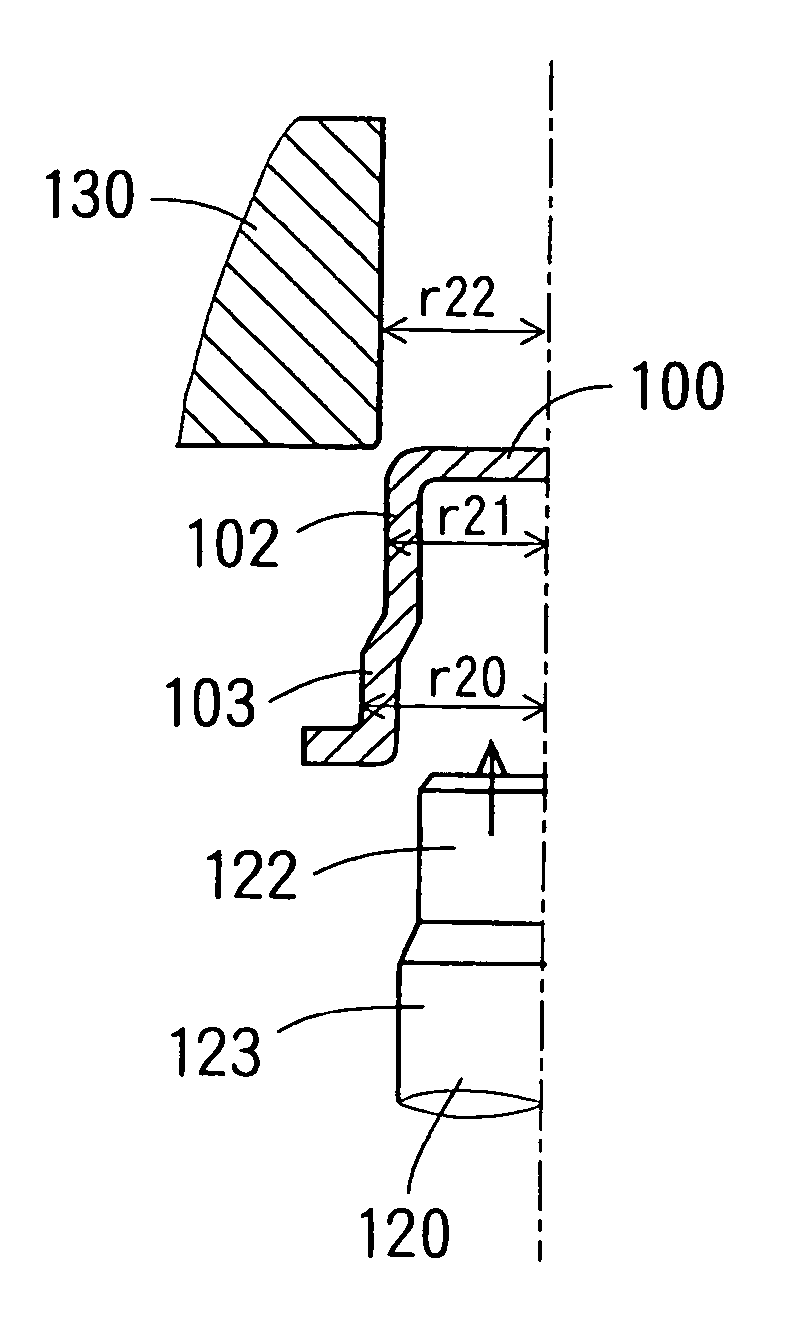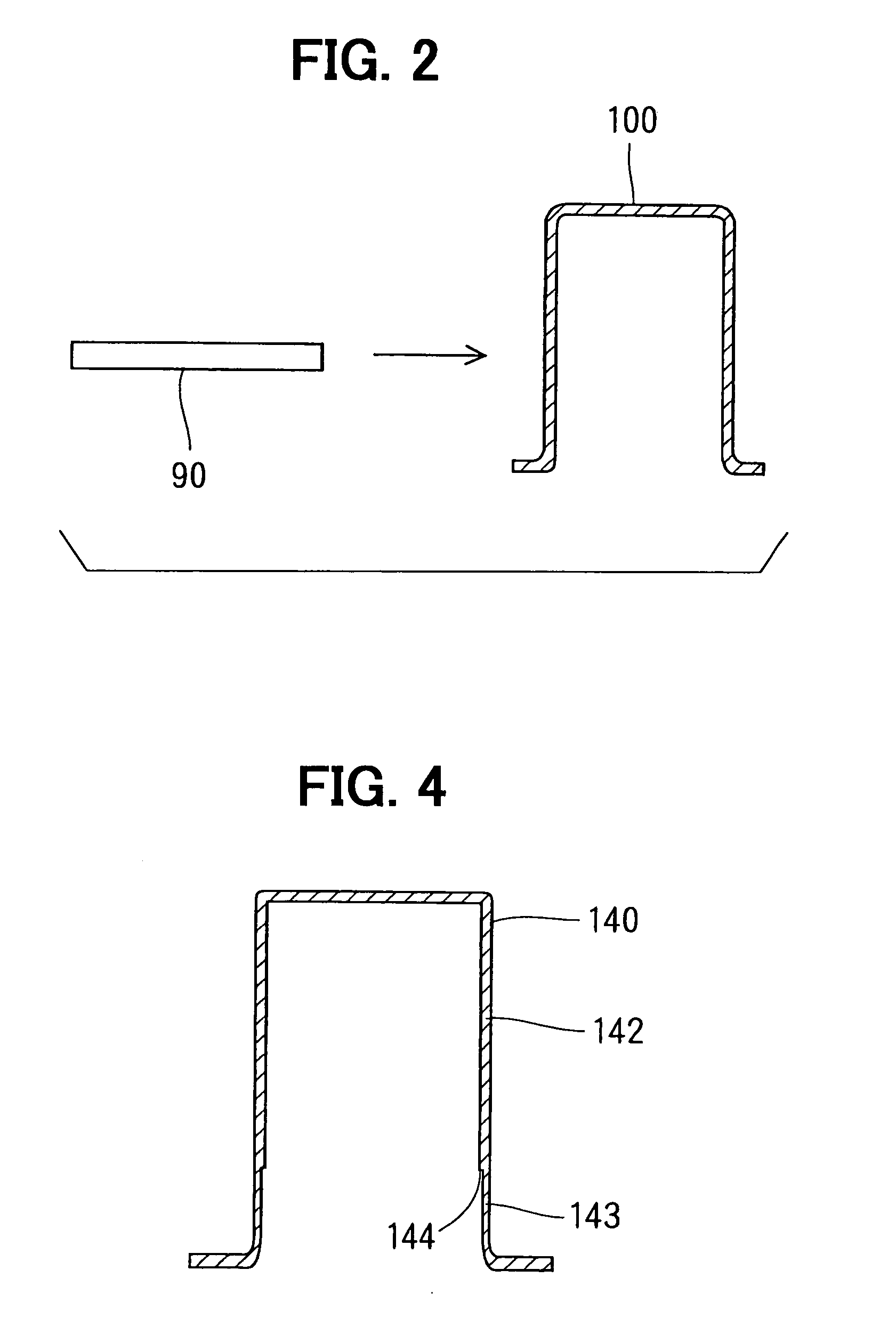Manufacturing method for cylindrical part
a manufacturing method and cylindrical technology, applied in the field of cylindrical parts, can solve the problems of increasing the manufacturing cost, not being able to form an inner side step portion at the boundary between the thin-walled portion and the heavy-walled portion, so as to achieve the effect of easy removal from the die and preventing the adhesion of the base metal to the die or the punch
- Summary
- Abstract
- Description
- Claims
- Application Information
AI Technical Summary
Benefits of technology
Problems solved by technology
Method used
Image
Examples
Embodiment Construction
[0046] An embodiment of the present invention will be explained with reference to the drawings, wherein an inner diameter and an outer diameter respectively designate a radius.
[0047] A fuel pump according to an embodiment of the present invention is shown in FIG. 1. The fuel pump 10 is, for example, an in-tank type pump installed in a fuel tank of a motor vehicle. A housing 12 of a cylindrical shape is made of an iron or steel. The housing 12 is composed of thin-walled portions 13, 14 at both longitudinal ends, and a heavy-walled portion 15 between the thin-walled portions 13, 14. An inlet side cover 16 and a discharge side cover 18 are fixed to the housing 12 at the thin-walled portions 13, 14 by a caulking process (inwardly bending a peripheral end of the respective thin-walled portions). Inner-side step portions 13a and 14a are formed at an inner peripheral surface of the housing 12 at boundaries between the heavy-walled portion 15 and the thin-walled portions 13, 14. The thickn...
PUM
| Property | Measurement | Unit |
|---|---|---|
| thickness | aaaaa | aaaaa |
| thickness | aaaaa | aaaaa |
| thickness | aaaaa | aaaaa |
Abstract
Description
Claims
Application Information
 Login to View More
Login to View More - R&D
- Intellectual Property
- Life Sciences
- Materials
- Tech Scout
- Unparalleled Data Quality
- Higher Quality Content
- 60% Fewer Hallucinations
Browse by: Latest US Patents, China's latest patents, Technical Efficacy Thesaurus, Application Domain, Technology Topic, Popular Technical Reports.
© 2025 PatSnap. All rights reserved.Legal|Privacy policy|Modern Slavery Act Transparency Statement|Sitemap|About US| Contact US: help@patsnap.com



